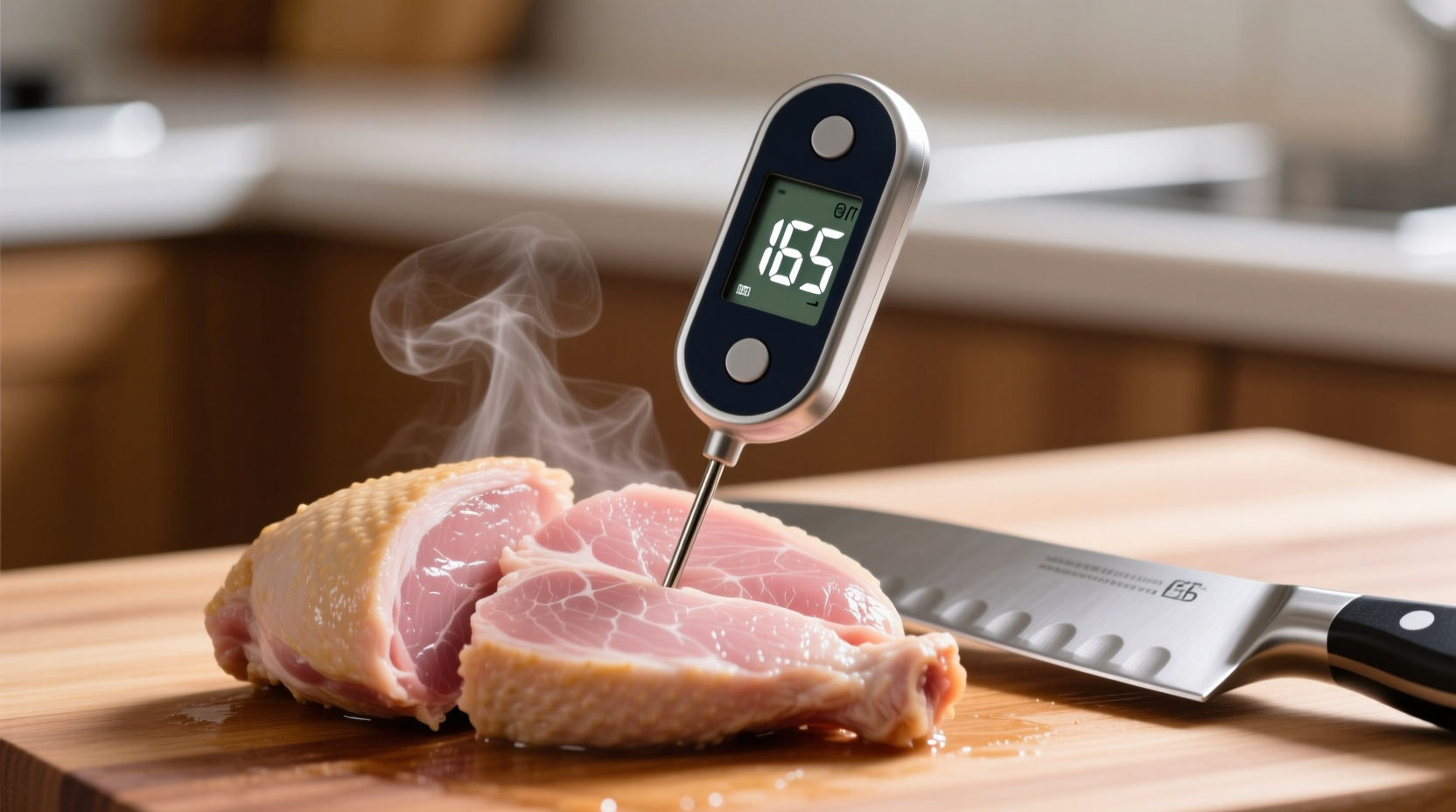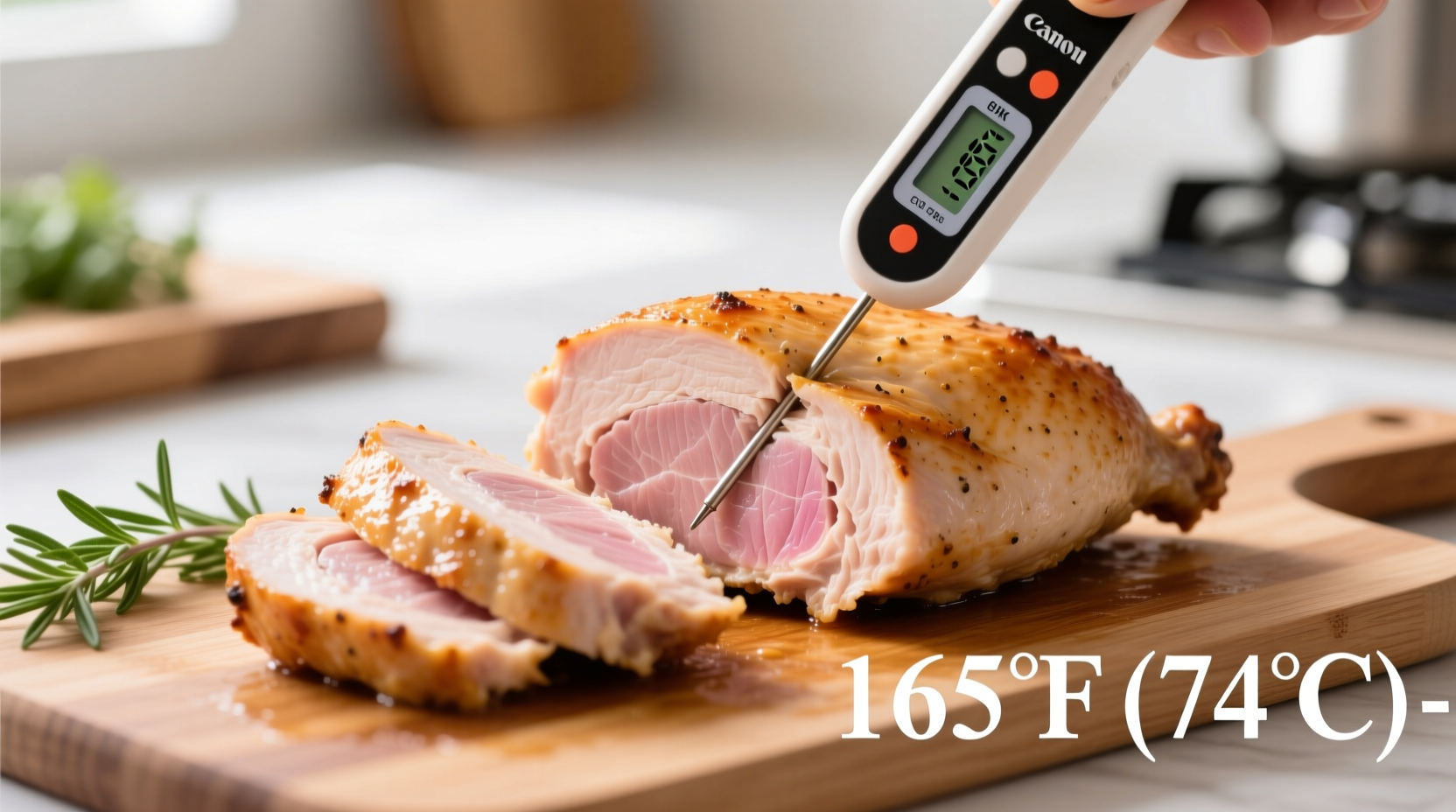Getting chicken temperature right isn't just about doneness—it's a critical food safety requirement that prevents foodborne illness. Each year, millions suffer from poultry-related food poisoning because of improper cooking temperatures. This guide delivers scientifically verified information you can trust, with practical techniques professional chefs use to achieve perfect results every time.
Why 165°F Is Non-Negotiable for Chicken Safety
Chicken requires special attention because it commonly carries pathogens that only proper heat can eliminate. The USDA's Food Safety and Inspection Service established 165°F as the minimum safe temperature after extensive research on pathogen destruction rates. At this precise temperature, harmful bacteria like salmonella are eliminated within seconds.
"Many home cooks rely on visual cues like clear juices or firm texture," explains Antonio Rodriguez, culinary expert with Michelin-starred kitchen experience. "These methods are dangerously unreliable. Only a properly calibrated thermometer gives you certainty."
How to Measure Chicken Temperature Correctly
Proper thermometer technique makes all the difference:
- Use an instant-read digital thermometer for accuracy within ±0.5°F
- Insert probe into thickest part of meat, avoiding bone or fat pockets
- Check multiple spots in larger cuts like whole chickens
- Sanitize probe between readings to prevent cross-contamination
- Wait 10 seconds for reading to stabilize
| Chicken Cut | Recommended Temp | Resting Time | Special Considerations |
|---|---|---|---|
| Boneless breasts | 160-162°F | 5 minutes | Remove at 160°F; carries over to 165°F |
| Bone-in thighs | 165°F | 8 minutes | Dark meat tolerates higher temps |
| Whole chicken | 165°F | 15 minutes | Check breast, thigh, and wing joints |
| Ground chicken | 165°F | 3 minutes | No carryover cooking; must hit exactly |
Understanding Temperature Evolution During Cooking
Chicken continues cooking after removal from heat through a process called carryover cooking. This timeline shows what happens at each stage:
- 140°F - Proteins begin denaturing, juices start to flow
- 150°F - Collagen breaks down, meat becomes opaque
- 160°F - Salmonella destroyed within 13 seconds
- 165°F - All harmful bacteria eliminated instantly
- 170°F+ - Excessive moisture loss, dry texture develops

Contextual Boundaries: When Standard Guidelines Differ
While 165°F is the universal safety standard, certain cooking methods create exceptions:
- Sous vide cooking: USDA permits lower temperatures with extended time (145°F for 30 minutes)
- Commercial kitchens: Some establishments use 158°F with validated cooking processes
- Restaurants: May remove chicken at 160°F knowing carryover cooking will reach 165°F
- Home cooking: Always target 165°F as your final temperature
The FDA Food Code specifies that restaurants must follow time-temperature combinations validated by food safety experts. Home cooks shouldn't attempt these precision methods without proper equipment and knowledge.
Avoiding Common Temperature Mistakes
These frequent errors compromise both safety and quality:
- Thermometer placement: Inserting too close to bone gives false high readings
- Single-point checking: Larger cuts need multiple temperature checks
- Ignoring resting time: Cutting too soon releases precious juices
- Using unreliable thermometers: Dial thermometers often have ±5°F variance
- Visual judgment: Pink color doesn't indicate undercooking in certain breeds
Recent USDA consumer research shows 43% of home cooks don't use thermometers regularly, relying instead on unreliable methods like checking juice color. This practice puts families at unnecessary risk of foodborne illness.
Practical Thermometer Selection Guide
Not all thermometers deliver restaurant-quality accuracy. For reliable chicken temperature readings:
- Choose instant-read models with ±0.5°F accuracy (Thermapen-style)
- Avoid dial thermometers with large variance margins
- Look for waterproof models that withstand oven heat
- Consider leave-in probes with wireless alerts for roasting
- Calibrate monthly using ice water (32°F) or boiling water (212°F)
"I recommend ThermoWorks models to all my cooking students," says Rodriguez. "Their precision makes the $30 investment essential for food safety. You wouldn't drive without a speedometer—don't cook chicken without an accurate thermometer."
Perfect Chicken Every Time: Proven Technique
Follow this chef-tested method for juicy, safe chicken:
- Bring chicken to 40°F internal temperature (remove from fridge 20 minutes before cooking)
- Season and sear at high heat to develop flavor
- Finish cooking at moderate temperature until 160°F internal
- Remove from heat and tent loosely with foil
- Rest for 5-15 minutes (depending on cut size)
- Final temperature will reach 165°F through carryover cooking
- Verify with thermometer before serving
This approach prevents the common mistake of overcooking while ensuring safety. The resting period allows juices to redistribute, creating moist, flavorful results that stay within safe temperature parameters.











 浙公网安备
33010002000092号
浙公网安备
33010002000092号 浙B2-20120091-4
浙B2-20120091-4